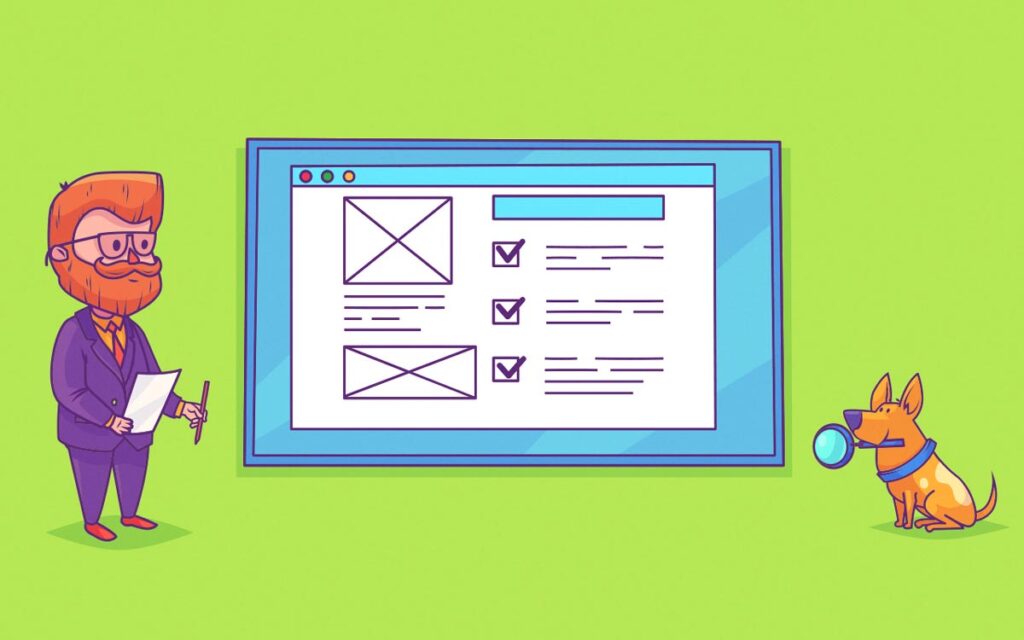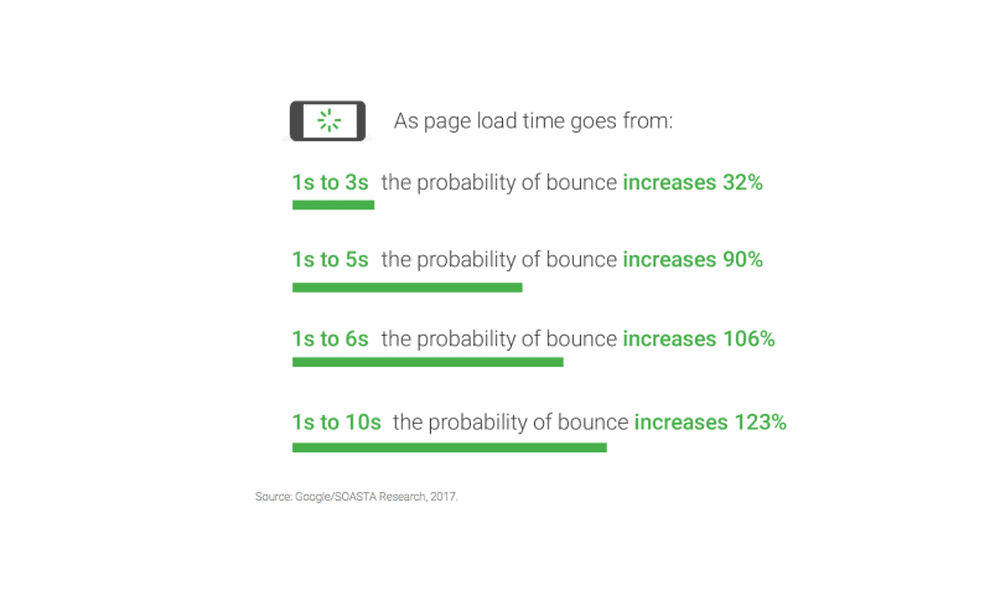Mastering Website Redesigning: The Definitive Guide
You're about to embark on a journey to transform your perspective on the powerful yet often misunderstood world of website redesigning. It can be daunting, but it's not an insurmountable challenge. In fact, with the proper knowledge and tools, it's a venture that can bring you enormous satisfaction and rewards.
Consider this: as of June 2023, there are nearly 1.13 billion websites worldwide, but only 200 million were active (82% inactive sites). That's a staggering amount of wasted potential. Imagine the opportunities available if more of those websites were effectively redesigned and reinvigorated!
Why should you care about website redesigning? Because it's an integral part of your business's digital presence. According to Sweor, 75% of consumers judge a company's credibility based on its website design. Moreover, Stanford University reported that 46.1% of people say a website's design is the top criterion for discerning a company's credibility. There's a strong correlation between good design and trust, and trust equals business.
In this guide, you'll gain an in-depth understanding of the entire redesigning process, from strategy development, user experience, layout and colour theory all the way through to the technical aspects of implementation. We'll take it step by step, ensuring you have all the knowledge needed to take your website from bland to grand and ultimately increase your online presence.
Ready to embark on this transformative journey? Let's get started.
Table of Contents
Understanding the Importance of Website Redesign

A well-designed website is the cornerstone of your digital marketing strategy. It's where your audience learns about your brand, engages with your content, and decides to convert.
In 2023, there are over 5 billion internet users worldwide. That's a massive audience; your website is your chance to make an impression. But if your site is outdated, slow, or not user-friendly, you'll likely lose potential customers.
Website redesign is all about improvement, not just change. Another study found that it takes about 0.05 seconds for users to form an opinion about your website, determining whether they'll stay or leave. Hence, website redesigning can be the difference between making a sale and losing a potential customer.
Identifying When a Website Redesign is Necessary
How do you know when it's time for a redesign? There are several signs:
- Your website isn't mobile-friendly: According to Statista, over 50% of global website traffic in 2022 was from mobile devices. If your site isn't mobile-friendly, you're missing out on a significant portion of your audience.
- Your website has a high bounce rate: A high bounce rate indicates that visitors leave your site without interacting with any other page. This could be due to poor design, slow load times, or irrelevant content.
- Your website isn't converting: If you're getting traffic but not conversions, your website could be the problem. Poor design, confusing navigation, and lack of clear calls-to-action can all hinder conversions.
Steps to a Successful Website Redesign
Website redesigning can be complex, but breaking it down into steps can simplify things. Here are the core steps to follow for a successful website redesign:
Step 1: Define Your Goals

So, before you jump into the exciting world of website redesign, it's crucial to take a moment and define your goals. What's the big picture? What do you want to accomplish with your shiny new site? The possibilities are endless, from boosting conversions to enhancing user experience or giving your business a fresh look.
Defining your goals is a compass that points you in the right direction. By clearly identifying your goals, you can align your efforts and resources accordingly, ensuring that every step you take contributes to the overall vision.
Now, let's explore some of these potential goals in more detail. You may be keen on increasing conversions, which means you want to transform more visitors into customers or clients. A website redesign can help you optimise the user flow, strategically place call-to-action buttons, and create a visually appealing design that captivates your audience. Ultimately, the goal is to drive more sales or generate more leads.
On the other hand, maybe you're more focused on improving the user experience. You want visitors to have a seamless and enjoyable journey when they land on your site. A redesign can involve simplifying navigation, streamlining content, and optimising loading speed, all of which contribute to a positive user experience. Happy visitors are likelier to stay, explore, and become loyal customers.
Another goal that might be on your mind is rebranding. Your business has evolved, and you want your website to reflect the new direction, values, or offerings. A redesign provides an excellent opportunity to revamp your brand's visual identity, incorporating new colours, fonts, and imagery that better align with your updated brand strategy.
Keeping your specific goals at the forefront of your mind during the entire redesign process is essential. They will shape your decisions, from the layout and functionality to the visual elements and content. By staying focused and intentional, you can ensure that your new website looks fantastic and accomplishes exactly what you want to achieve.
Step 2: Analyse Your Current Website

The first step is to leverage tools such as Google Analytics to gather valuable data on your site's performance. By doing this, you'll better understand how your website performs, which areas are prosperous, and which areas might need attention.
Google Analytics is a powerful tool that provides comprehensive information about your website's visitors, their behaviour, and how they interact with your content. It allows you to track various metrics such as the number of visitors, their demographics, the pages they visit, the duration of their visits, and much more.
Once you have Google Analytics set up for your website, you can start analysing the data to uncover valuable insights. For example, you can identify which pages have the highest traffic and engagement rates, indicating that they resonate well with your audience. These pages may serve as models for what's working effectively on your site.
On the other hand, you may also discover pages that could be performing better or have high bounce rates, indicating that visitors are leaving quickly without exploring further. This data can highlight areas that need improvement or optimisation to enhance user experience and encourage visitors to stay longer.
Furthermore, Google Analytics allows you to track your website traffic sources. You can identify which channels drive the most visitors to your site, such as organic search, social media, referrals, or paid advertising. This information helps you understand which marketing efforts generate the best results and where you might want to allocate more resources or refine your strategies.
By thoroughly analysing the data from Google Analytics, you can make informed decisions about improving your website. You may discover opportunities to enhance your content, optimise your navigation, streamline your conversion funnels, or make design adjustments to create a more engaging user experience.
Step 3: Gather Inspiration and Ideas

When creating a website, one great way to kickstart your creative process is by exploring other websites for inspiration. It's like stepping into a treasure trove of design ideas and functionality options that can ignite your imagination.
As you browse various websites, note the design elements that catch your eye. Is it the sleek, modern layout, vibrant colour scheme, or clever typography? Pay attention to the small details that make a significant impact and make you go, “Wow, I want that on my site!”
But it's not just about the looks; functionality is equally important. Think about what features and capabilities you'd like to include on your website. Are you aiming for a user-friendly navigation menu, a responsive design that adapts seamlessly across different devices, or interactive elements that engage your visitors? Gathering ideas in this way can help you envision how your website will come together.
Remember, the goal is not to copy someone else's design outright but to use these sources as a springboard for your unique vision. Please take what you like, mix it with your style, and create something that represents you or your brand.
By exploring and gathering ideas from other websites, you'll gain insights into the latest trends, discover innovative solutions, and broaden your horizons. It's an exciting journey that will help you shape your website into something truly remarkable.
Step 4: Create a Redesign Plan

Now that you have your goals, analysis, and ideas, it's time to dive into the exciting part: creating a redesign plan. Think of it as your roadmap to transform your vision into reality. This plan will serve as a blueprint for what changes you want to make, how you'll implement them, and a timeline to keep things on track.
First things first, let's tackle the changes you want to make. Take a moment to envision the result you're aiming for. Do you want to revamp your website, rebrand your company, or give your product a new look? Whatever it may be, jot down all the changes you wish to incorporate. Be as detailed as possible. Consider the visuals, user experience, messaging, or other aspects needing improvement.
Next, let's move on to the implementation phase. Consider the steps you'll need to take to bring your ideas to life. Break it down into smaller, manageable tasks. Determine what resources, such as design software, developers, or external agencies, you'll need to execute each step effectively. Assign responsibilities to team members if applicable, ensuring everyone knows their roles and expectations.
Now, let's talk about timelines. Setting realistic deadlines to keep your redesign project on schedule is crucial. Consider the complexity of each task and estimate the time it will take to complete them. Remember any dependencies or potential roadblocks that might arise along the way. Building in some buffer time is always a good idea to account for unexpected delays. Create a timeline encompassing the entire duration of the redesign, from start to finish, and distribute it among the team to keep everyone informed and accountable.
Remember, a redesign plan is not set in stone. It's a dynamic document that can be adjusted as needed. Stay flexible and open to modifications as you progress through the project. Regularly review your plan, track your progress, and make adjustments if necessary.
Creating a well-thought-out redesign plan gives you a clear direction and a structured approach to bringing your ideas to fruition. So, roll up your sleeves, gather your team, and embark on this exciting journey towards a successful redesign!
Step 5: Implement the Redesign

To start, you have a couple of options. You can collaborate with a talented designer who can transform your vision into a stunning website or use user-friendly website builders that simplify the process. Either way, the goal is to create a new, appealing digital space that reflects your brand's personality and meets your users' needs.
Once you've chosen your preferred route, it's time to dive into the implementation phase. If you're working with a designer, communicate your ideas clearly and provide them with any necessary assets, such as your brand guidelines, logos, and images. Collaboration is essential here as you work together to bring your vision to life.
On the other hand, if you decide to use a website builder, you'll have access to a range of customisable templates and intuitive drag-and-drop features. This allows you to experiment and see your changes in real time, making it easier to create the exact design you have in mind. These builders often have built-in design elements, so you can easily customise colours, fonts, layouts, and more.
Once the design is implemented, your next crucial step is thoroughly testing your website before launching it. Testing helps ensure that everything functions as intended and that your users will have a seamless experience. Start by browsing each page, checking for broken links, missing images, or formatting issues. Test different screen sizes and browsers to ensure your website is responsive and looks great across various devices.
Pay close attention to user interactions as well. Test any forms, buttons, or interactive elements to ensure they work correctly. Please double-check that your navigation is intuitive, allowing users to find what they're looking for quickly. It's also good to ask friends or colleagues to review your website and provide feedback before the official launch.
Once you've addressed issues and made necessary adjustments based on testing and feedback, you're ready for the big moment. Launch your redesigned website and share it proudly with your audience. Remember, a successful website is an ongoing process, so keep monitoring and optimising it based on user feedback and changing trends. With a well-executed redesign, you can create an engaging online presence that captures attention and drives results.
Step 6: Monitor and Optimise

So, once you've launched your shiny new website, the work doesn't stop there! It's crucial to keep a close eye on its performance to ensure it's meeting your goals and delivering a top-notch experience to your visitors. And how do you do that? By harnessing the power of data!
Monitoring your website's performance through data analysis is like having a pair of supercharged glasses that let you see what's happening behind the scenes. It lets you identify any issues lurking in the shadows, hindering your site's success. Think of it as your detective tool to uncover areas for improvement.
By diving into the data, you can gain valuable insights into how users interact with your website. Are they staying engaged and exploring multiple pages, or are they bouncing away in a matter of seconds? Which pages are attracting the most attention, and which ones are being neglected? Are there any elements causing frustration or confusion? You can answer these types of questions by digging into the data.
Armed with this information, you can then optimise your website accordingly. It's important to remember that website redesigning isn't a one-time event; it's an ongoing process. The digital landscape is constantly evolving, and user expectations are ever-changing. By regularly analysing your website's performance, you can stay ahead of the game and ensure your site remains relevant and practical.
Optimisation might involve tweaking the layout, adjusting the navigation, or fine-tuning the content to better align with your users' needs. It could also mean optimising for speed, as slow-loading pages can quickly turn visitors away. The key is to make data-informed decisions that will enhance the user experience and drive your desired outcomes.
This ongoing process may sound like much work, but it's a worthwhile investment. By continuously monitoring and optimising your website, you're actively working towards improving its performance and ultimately achieving your business objectives. It's like giving your website a regular check-up to keep it healthy and thriving in the competitive online world.
So, don't just sit back and admire your new site from afar. Dive into the data, uncover insights, and take action to ensure your website remains a powerful tool in your digital arsenal. Remember, website redesigning is an ongoing journey, and by embracing it, you'll be well-positioned to stay ahead of the curve and provide an exceptional user experience.
Best Practices for Website Redesign
While each website redesign project is unique, certain best practices apply to all. Here are a few essential tips to keep in mind:
- User Experience (UX) First: Your website is for your users rather than for you. Focus on making your site easy to navigate, with clear calls-to-action and engaging content.
- Mobile-First Design: With over half of the web traffic coming from mobile devices, designing with mobile in mind is critical. Ensure your site is responsive and looks good on all screen sizes.
- SEO-Friendly: Your site needs to be found. Make sure to optimise your site for search engines. This includes using relevant keywords, optimising images, and creating high-quality content.
- Fast Load Times: Users expect sites to load quickly. A study by Google found that 53% of mobile site visits are abandoned if pages take longer than three seconds to load. Optimise your site's speed to keep your users engaged.
- Consistent Branding: Your website is a representation of your brand. Make sure to use consistent branding across your site. This includes colours, fonts, and tone of voice.
The Impact of a Successful Website Redesign
A successful website redesign can have a significant impact on your business. It can improve user experience, increase conversions, and enhance your brand image.
For example, Crazy Egg saw a 363% increase in conversions after redesigning its homepage, while Skullcandy saw its revenue increase by 210% after a complete website redesign. These examples show the power of a well-executed website redesign.
Conclusion
Website redesigning isn't just about changing the look of your site; it's about improving its performance, enhancing the user experience, and boosting conversions. With careful planning, a clear understanding of your goals, and a focus on best practices, you can create a website that looks good and delivers results.
Remember, website redesigning is an ongoing process. It's about continuously improving and optimising to meet your audience's changing needs and the evolving digital landscape. So don't just redesign and forget. Monitor, optimise, and keep making your website the best. Now go forth, redesign, and conquer the digital world!
